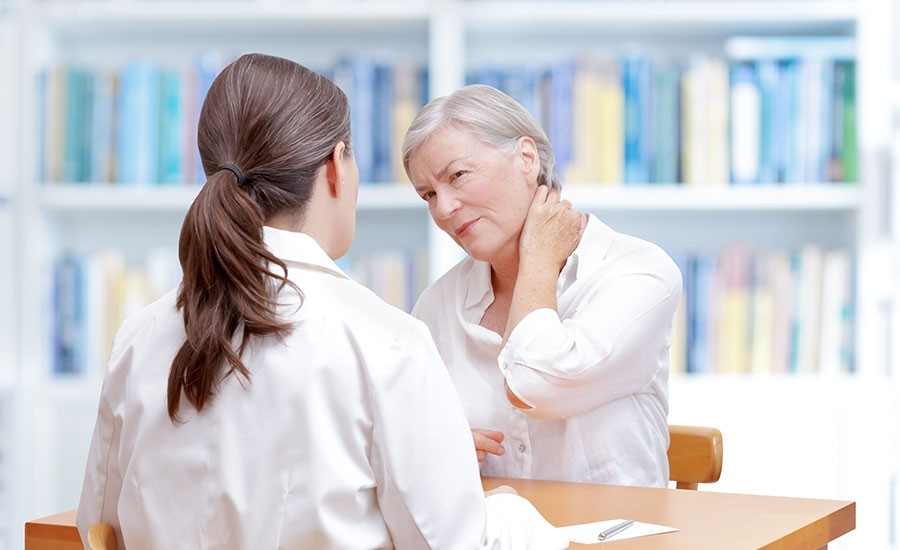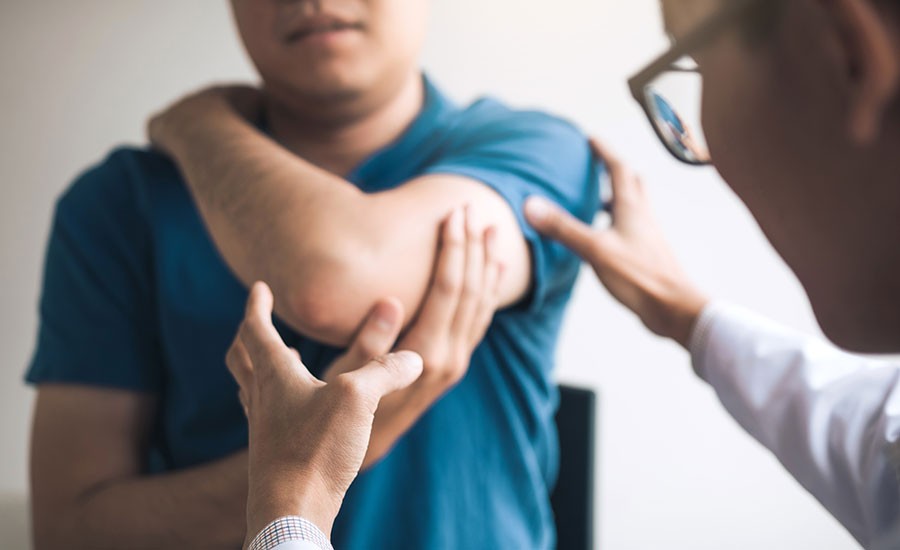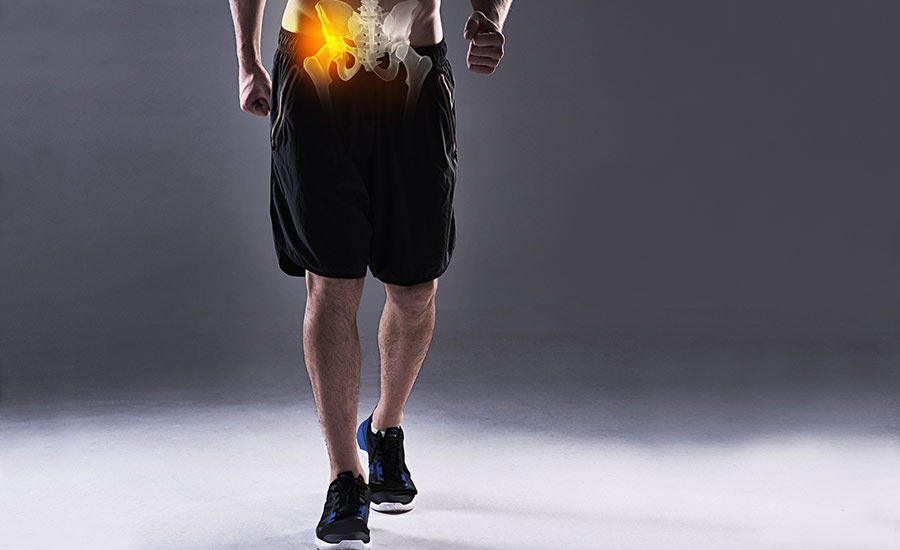
Living with pain, whether it’s a persistent throb in your back, the sting of arthritis, or the debilitating aftermath of an injury, can be a challenging and often overwhelming.
But your pain doesn’t have to dictate the quality of your life. Effective pain management techniques can empower you to take control, reducing the severity of your symptoms and unlocking a path to improved wellbeing.
We’ll explain the most common types of pain, along with the most effective pain management techniques, and share our pain management solutions at OrthoEast.
Most Common Types of Pain
From the temporary discomfort of a minor injury to the relentless ache of chronic conditions, pain takes many forms.
The most common types of pain include:
- Chronic pain
- Acute pain
- Nociceptive pain
- Neuropathic pain
- Radicular pain
Within these categories, the most common pain conditions include:
Headaches
Headaches can be caused by tension, migraines, cluster headaches, sinusitis, dehydration, caffeine withdrawal, or other underlying medical conditions.
Acute headaches are often due to temporary factors such as tension, dehydration, or sinusitis. Chronic headaches are typically related to recurring conditions like migraines, cluster headaches, or tension-type headaches that persist over time.
Knee Pain
Knee pain can be caused by injuries like ligament sprains or meniscus tears, mechanical issues like a dislocated kneecap or iliotibial band syndrome, overuse leading to strains and inflammation, or conditions like arthritis or gout.
Acute knee pain is often due to an injury or mechanical problem, such as a ligament sprain or meniscus tear. Chronic knee pain is typically associated with age-related wear and tear, or with specific conditions like osteoarthritis or gout.
Hip Pain
Foot pain can result from plantar fasciitis, Achilles tendinitis, bunions, hammertoes, neuromas, or injuries like fractures and sprains.
Acute foot pain is commonly caused by injuries, such as fractures or sprains, or by inflammation of the plantar fascia or Achilles tendon. Chronic foot pain often arises from structural abnormalities like bunions and hammertoes, or from conditions such as neuromas or long-standing plantar fasciitis.
Foot Pain
Hip pain can be caused by arthritis, hip fractures, bursitis, tendinitis, hip labral tears, or muscle or ligament strains.
Acute hip pain is typically a result of inflammation or irritation in the hip joint, such as bursitis or tendinitis, or due to muscle or ligament strains. Chronic hip pain is usually related to age-related degeneration, or to specific conditions like osteoarthritis or hip labral tears.
Back Pain
Back pain can be caused by muscle or ligament strain, disc problems, spinal abnormalities, osteoporosis, or conditions like arthritis.
Acute back pain mostly happens due to mechanical issues, such as muscular sprain, strain, or spasm. Chronic back pain is usually related to age-related changes, or to a specific condition such as arthritis or degenerative disc disease.
In 2020, low back pain (LBP) was a condition that impacted 619 million people around the world. Projections indicate that this number is set to rise to 843 million by 2050, with the growth largely attributed to factors such as the increase in global population and the aging process.
Neck Pain
Neck pain can be caused by muscle or ligament strains, poor posture, disc herniation, nerve compression, or conditions like osteoarthritis or spondylosis.
Acute neck pain is often due to muscle or ligament strain, typically from poor posture, carrying heavy loads, or sleeping in an awkward position. Chronic neck pain is generally related to degenerative changes in the spine, or to specific conditions like osteoarthritis or cervical spondylosis.
Arthritis Pain
Arthritis pain can result from inflammation in the joints, damage to joint cartilage, or the accumulation of uric acid crystals. It can be caused by various types of arthritis, including osteoarthritis, rheumatoid arthritis, gout, or lupus.
Acute arthritis pain often arises from a sudden increase in inflammation, such as a gout flare-up or an active phase of rheumatoid arthritis. Chronic arthritis pain is usually associated with ongoing inflammation and degenerative changes in the joints, as seen in osteoarthritis or long-standing rheumatoid arthritis.
Nerve Pain (Neuropathic Pain)
Nerve pain, also called neuropathic pain, can be caused by nerve damage or malfunction due to conditions like diabetes, shingles, carpal tunnel syndrome, sciatica, or chemotherapy-induced peripheral neuropathy.
Acute nerve pain often results from sudden nerve compression or inflammation, as seen in conditions like sciatica or carpal tunnel syndrome. Chronic nerve pain typically arises from ongoing nerve damage or dysfunction, often related to long-standing diabetes, postherpetic neuralgia after shingles, or chemotherapy-induced peripheral neuropathy.

Chronic Pain Management Techniques
Chronic pain is pain that lasts for weeks or longer, even after the initial injury or cause has been treated.
Chronic pain management involves a variety of approaches, many of which are tailored to the specific type of pain, its cause, and the needs of the individual patient.
The most common techniques for managing chronic pain include:
- Medication
- Physical therapy
- Heat and cold therapy
- Acupuncture
- Transcutaneous electrical nerve stimulation (TENS)
- Cognitive behavioral therapy (CBT)
- Nerve blocks
- Biofeedback
- Surgery
We’ll explain these pain management techniques in more detail below.
Acute Pain Management Techniques
Acute pain is pain that arises from a specific illness or injury, is often accompanied by muscle contractions or activation of the sympathetic nervous system and is mostly temporary.
Acute pain management often involves a combination of approaches depending on the source of the pain, its intensity, and the patient’s overall health.
The most common techniques for managing acute pain include:
- Pain relief medications
- Heat and cold therapy
- Rest and immobilization
- Physical therapy
- Local anesthetics
- Splinting or bracing
- Alternative therapies
- Relaxation techniques
- Intravenous or intra-muscular pain relief
Although sometimes the treatments may be similar, acute and chronic pain are viewed as distinct clinical conditions.
Non-Invasive Pain Management Techniques
Non-invasive pain management techniques offer a gentle approach to alleviating discomfort without penetrating the skin or body tissues.
The most common non-invasive pain management techniques include:
- Physical therapy: This method uses exercises and movements to improve mobility, strengthen muscles, and promote healing, which can be beneficial for conditions like back pain, or for healing after surgery.
- Exercise: Regular physical activity can help reduce chronic pain. This could include walking, swimming, cycling, or specific exercises given by a physical therapist.
- Over-the-counter medications: Non-prescription drugs such as non-steroidal anti-inflammatory drugs (NSAIDs), acetaminophen, and topical creams can be used to manage mild to moderate pain.
- Heat and cold therapy: Applying heat can help loosen tight muscles and increase blood flow, while cold therapy can help reduce inflammation and numb pain.
- Cognitive behavioral therapy (CBT): This form of psychological therapy teaches individuals how to identify and modify harmful thoughts and behaviors that can exacerbate pain. It can be very effective for managing chronic pain.
- Mindfulness and meditation: These techniques help focus the mind and reduce stress, which can lower pain levels and improve coping strategies.
- Biofeedback: This technique involves learning to control bodily processes that are typically automatic, such as heart rate or muscle tension, with the goal of reducing pain
- Transcutaneous electrical nerve stimulation (TENS): With this pain management technique, a TENS unit delivers small electrical currents to the body to help alleviate pain.
- Acupuncture: This traditional Chinese medicine technique involves inserting thin needles into specific points on the body to help relieve certain types of pain.
- Massage therapy: Massage is a manipulation of the body’s soft tissues to alleviate muscle tension, reduce stress, and promote relaxation.
Invasive Pain Management Techniques
Invasive pain management techniques are medical procedures that involve penetration into the body, typically through the skin, to alleviate pain.
The most common pain management techniques include:
- Injections: Injections can be used to deliver pain-relieving medication directly to the source of pain. This includes nerve blocks, joint injections, and epidural injections.
- Nerve blocks: This medication is used to block pain signals along specific nerve pathways. Nerve blocks can be used for a variety of conditions, including neuralgia, chronic regional pain syndrome (CRPS), and certain headaches.
- Epidural steroid injections: This type of injection delivers steroids directly into the epidural space around the spinal cord to reduce inflammation and alleviate pain.
- Facet joint injections: These injections deliver an anesthetic and steroid directly into a facet joint in the spine to reduce inflammation and pain.
- Radiofrequency ablation: This is a procedure where heat from radio waves is used to disrupt nerve function to prevent the transmission of pain signals.
- Spinal cord stimulation: This involves the implantation of a device that sends electrical signals to the spinal cord to help control pain.
- Intrathecal pump implants: These are devices that deliver pain medication directly to the space around the spinal cord, which can help manage pain that hasn’t responded to other treatments.
- Trigger point injections: This involves injecting medication directly into a trigger point, which is a specific area of muscle that causes pain when compressed.
- Surgical interventions: For certain types of pain, surgical procedures might be necessary. This can include discectomy for herniated discs, joint replacements for severe arthritis, or various procedures for cancer-related pain.
Pain Management Techniques at OrthoEast
The treatments and solutions we offer at OrthoEast aim to provide pain relief, enhance mobility, and reduce the impact of pain on our patients, for both acute and chronic conditions.
Techniques that we offer or might recommend include:
- Relative rest: Reducing or adjusting your activities can allow your body to heal. It doesn’t mean complete bed rest, but rather modifying activities to avoid exacerbating pain. For example, if running causes knee pain, you could switch to a lower-impact exercise like swimming or cycling.
- Physical therapy: Our team of specialists might recommend physical therapy to help reduce pain and improve mobility. This could include exercises to strengthen muscles and improve flexibility, massage, heat or cold therapy and electrical stimulation. Physical therapist could also teach you how to move safely and efficiently to prevent pain and avoid re-injury.
- RICE: This stands for Rest, Ice, Compression, and Elevation. It’s a common treatment protocol for acute injuries like sprains or strains. Rest involves avoiding activities that cause pain. Ice can be applied to the area to reduce swelling and numb pain. Compression, such as wrapping the area in an elastic bandage, can also help reduce swelling. Elevation means raising the injured area above the level of the heart, which can help reduce swelling and pain.
- Splint: A splint is a device used to support and protect injured bones and soft tissues. By immobilizing the injured area, a splint can help prevent further damage and reduce pain and swelling.
- Medication: Over-the-counter pain relievers like acetaminophen and nonsteroidal anti-inflammatory drugs (NSAIDs) can be used for mild to moderate pain. Topical pain relievers, like creams or patches, can also be used.
- Acupuncture: This technique involves inserting thin needles into specific points on the body. Research suggests that acupuncture might help relieve certain types of pain by stimulating the release of the body’s natural painkillers, called endorphins.
These advanced techniques are carefully selected to ensure optimal pain relief, all while prioritizing your safety and comfort.
From simple injections to complex surgical interventions, we also offer various pain management procedures, such as:
- Epidural steroid injections
- Facet joint injections
- Nerve blocks
- Radiofrequency ablation
- Spinal cord stimulation
- Joint injections
- Bursa injections
Our specialists are experts in several different treatment areas, including:
- Minimally invasive spine surgery
- Alternatives to fusion
- Carpal tunnel surgery
- Knee repair & preservation
- Hip repair & preservation
- Shoulder repair & preservation
From your initial consultation to your procedure or treatment plan and recovery, our compassionate team will be by your side every step of the way to help you find a pain-free future.

Pain Management Specialists at OrthoEast
From your initial consultation to your procedure or treatment plan and recovery, our compassionate team will be by your side every step of the way to help you find a pain-free future.
At OrthoEast, we carefully assess your condition, medical background, and individual requirements to design a comprehensive treatment program tailored to your needs.
Our team of pain management experts, including Dr. Pamela D’Amato and Dr. Anil K. Sharma, is dedicated to providing relief from pain and enhancing the quality of life for every patient.
Our pain management specialists will conduct a physical exam to identify the root of your discomfort, along with any necessary diagnostic procedures, like X-rays, MRIs, or a blood analysis.
If you’re experiencing pain in your knee, hip, shoulder, elbow, hand, or ankle, or dealing with a painful condition such as arthritis, we will tailor a treatment plan specifically for your needs. Make an appointment at OrthoEast and meet our leading orthopedic specialists to find pain relief.



